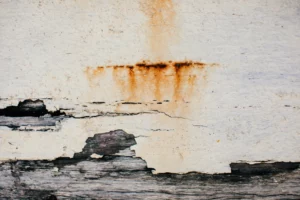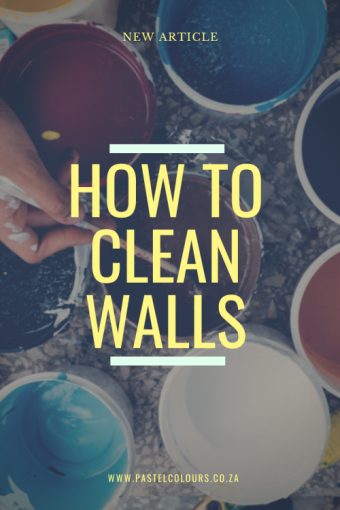How to clean walls? In most homes, walls make up the largest area of hard surfaces, so here is how to clean them.
Even though walls are vertical, they can still become coated with dust, grease splatters, smoke, insect droppings, and spider webs. Areas near doors, light switches, and furniture take the most abuse and gather soil and scuffs from hands, feet, and sharp corners.
Just as we regularly clean our floors, painted walls also need attention. With just a few basic products and tools, you can easily maintain walls painted with different types of paint and finishes.
How Often to Clean Painted Walls
As part of your regularly scheduled chores, painted walls should be dusted and cobwebs removed at least monthly. Smudges and dirt around doorknobs and light switches should be cleaned weekly. For the best results, large splatters and scribblings with crayons should be cleaned immediately.
Before You Begin
While every type of paint finish can be dusted easily, the type of paint and the finish will determine the best way to clean the wall.
Types of Interior Wall Paint
Oil-based paint – Often used in high-moisture areas. More durable than water-based paint and withstands frequent cleaning well.
Water-based paint – The most common type of interior wall paint. More resistant to cracking and chipping than oil-based but not as durable to cleaning.
Types of Interior Paint Finishes
Matt – Almost chalky in appearance, there is no shine to the surface. Does not hold up well to cleaning. Do not use harsh chemicals or excessive pressure when cleaning.
Satin or Eggshell – Reflects light with a light sheen. More durable for cleaning and suitable for high traffic areas. Do not use abrasive cleaners and limit the amount of moisture when cleaning.
Semi-gloss – Reflects light with a noticeable shine. An excellent choice for kitchens, bathrooms, doors, and trim. Holds up well to moisture but do not use the harshest chemicals.
High gloss – Leaves the wall with a strong, shiny surface. The most durable of finishes, it is a good choice for furniture, cabinets, and trim and cleans easily with detergent or a degreaser.
What You’ll Need
- Bucket
- Sponges or microfiber cloths
- Vacuum or duster
- Step stool or ladder
Materials
- All-purpose cleaner
- Dishwashing liquid
- Distilled white vinegar
- Laundry Borax
- Baking soda
How to Clean Water-Based Painted Walls
Remove Dust
Starting at the top of the wall, use a vacuum with an extendable wand and a dusting brush or a microfiber duster to remove dust and cobwebs. Always use a sturdy step stool or ladder when reaching high spots.
Mix a Cleaning Solution
In a bucket, add one teaspoon all-purpose cleaner per one litre of warm water. Fill a second bucket with clean water.
Wipe Down Walls
Dip a sponge or microfiber cloth in the cleaning solution and wring until no water is dripping. Start at the top of the wall and working in a small section, move down the wall. Starting at the top prevents drips from falling on areas that have already been cleaned. Rinse out the sponge frequently.
Rinse the Walls
Dip a second sponge or cloth in the clean water and wring until nearly dry. Rinse away any soapy residue as you move down the wall.
Tackle Heavily Soiled Areas
Making sure that the electricity is turned off, clean carefully around light switches and outlet plugs. Do not allow these areas to become excessively wet.
If scuffs and smudges do not come off easily, dip your dampened sponge in some baking soda and lightly rub the area. The gentle abrasive action of the baking soda should remove the problem.
How to Clean Oil-Based Painted Walls
Dust the Walls
Begin by dusting the walls. This will prevent loose dirt being moved around while you clean.
Mix a Cleaning Solution
In a bucket, add one teaspoon dishwashing liquid and 1/2 teaspoon distilled white vinegar per one liter of warm water. Fill a second bucket with plain water for rinsing.
Wipe and Rinse
Dip a sponge or microfiber cloth in the cleaning solution, wring out well, and wipe down the walls starting at the top. Follow up with a sponge dipped in plain water and wrung out well for a final rinse.
Tackle Tough Stains
If the walls are particularly dirty, add two tablespoons of laundry borax to the cleaning solution.

Please contact us if you have any queries.
As always, we hope you found this article useful!
The PC Team.
Please note that some information was scouted from Google.


